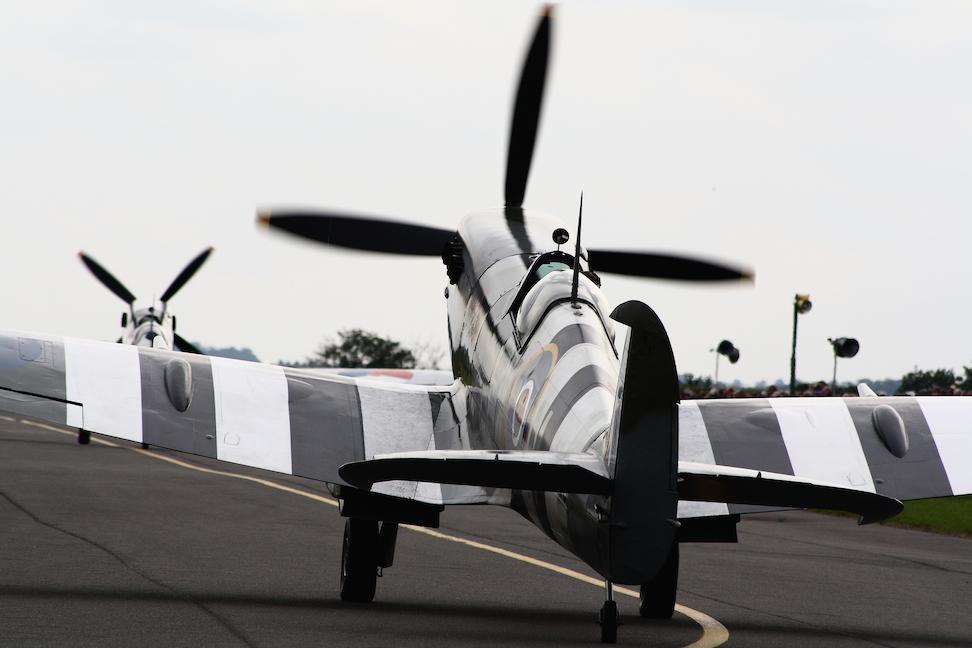Like it or not, the USAAF had only the P-40 available when it went to war. It rarely outperformed the fighters that it opposed, but it was one of the sturdiest fighters produced during World War II. Remembered as a "best second choice," innumerable pilots owe their lives to its rugged quality. The Curtiss P-40 was undoubtedly one of the most controversial fighters to serve in quantity during the Second World War. It was praised and abused, lauded and vilified, but the fact remains that, as the first American single-seat fighter to be manufactured on a mass-production basis, it bore much of the brunt of the air warfare over several battle fronts. Its performance was inferior to the performances of the majority of its antagonists, but this shortcoming was partly compensated for by its tractability and its sturdiness which enabled it to withstand a considerable amount of punishment. It was amenable to adaptation and it was available when most sorely needed.
Not particularly good technically or in performance, though very durable, P-40s continued to be produced until the end of 1944, serving also with air force units of Turkey, South Africa, Canada, Australia and New Zealand. Later versions were known as Kittyhawks to the RAF and its Allies. Not usually realized is that the name Warhawk applied only to the United States Army Air Force P-40s starting with the P-40F version, a much improved plane with a license built version of the British Rolls-Royce Merlin engine installed.
The Kittyhawk was the main fighter used by the RAAF in World War II, in greater numbers than the Spitfire. Two RAAF squadrons serving with the Desert Air Force, No. 3 and No. 450 Squadrons, were the first Australian units to be assigned P-40s. Other RAAF pilots served with RAF or SAAF P-40 squadrons in the theater.
Many RAAF pilots achieved high scores in the P-40. At least five reached "double ace" status: Clive Caldwell (22 kills), Nicky Barr, John Waddy, Bob Whittle (11 kills each) and Bobby Gibbes (ten kills) in the Middle East, North African and/or New Guinea campaigns. In all, 18 RAAF pilots became aces while flying P-40s.
A total of 301 P-40s were allocated to the Royal New Zealand Air Force under lend lease, 297 seeing service, (the remaining 4 being lost on delivery). These aircraft equipped 14 Squadron, 15 Squadron, 16 Squadron, 17 Squadron, 18 Squadron, 19 Squadron and 20 Squadron. Some RNZAF pilots in North Africa and Italy also flew British P-40s while serving with RAF squadrons.
RNZAF P-40s were successful in air combat against the Japanese during intense fighting in the Pacific theatre from 1942 until 1944. New Zealand pilots claimed 99 aerial victories in P-40s, losing 20 aircraft in aerial combat. Geoff Fisken, the Commonwealth's highest scoring flying ace in the Pacific, flew P-40s with 15 Squadron, although half his victories came with the Brewster Buffalo.
TECHNICAL NOTES:
Armament: Six .50-cal. machine guns, 700 lbs. of bombs externally
Engine: Allison V-1710 of 1,150 hp
Maximum speed: 362 mph
Cruising speed: 235 mph
Range: 850 miles
Ceiling: 30,000 ft.
Span: 37 ft. 4 in.
Length: 31 ft. 9 in.
Height: 12 ft. 4 in.
Weight: 9,100 lbs. loaded






